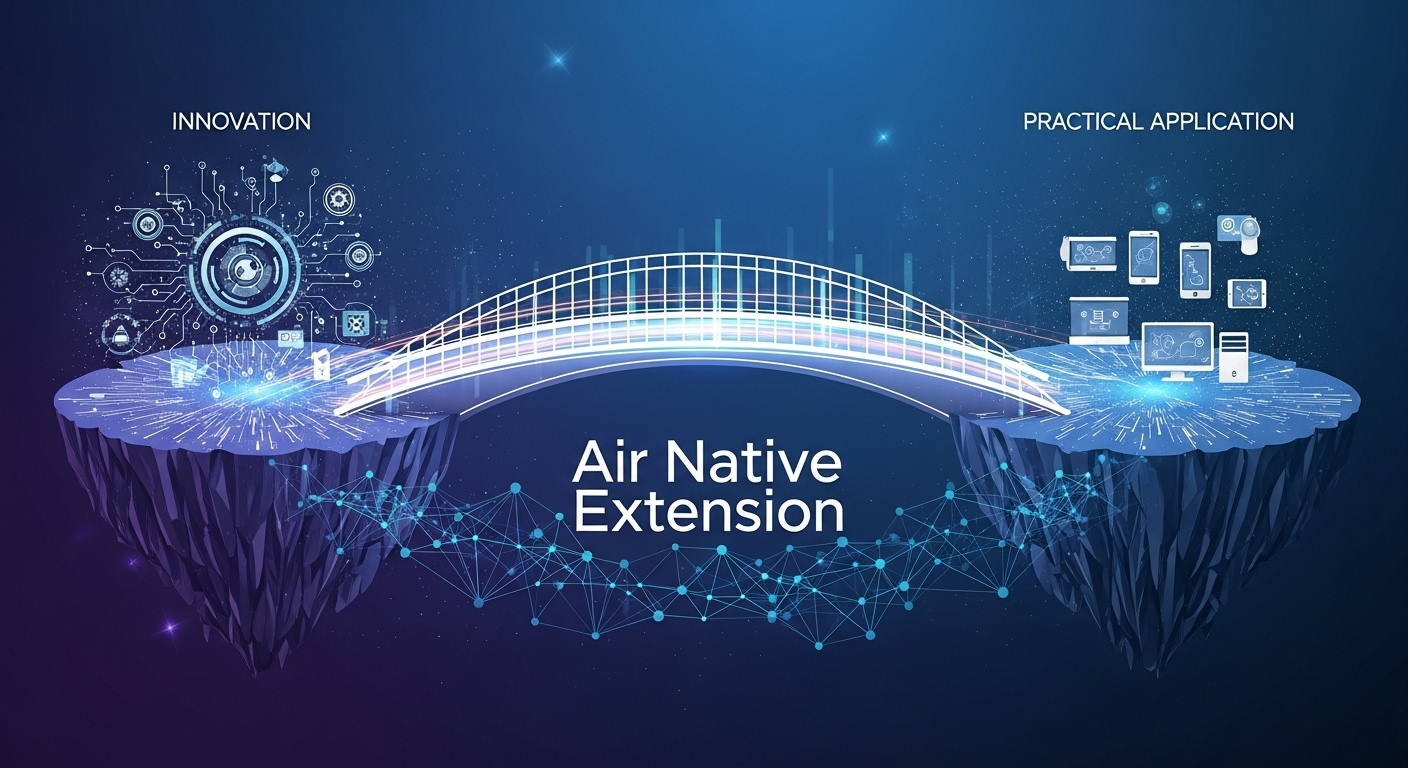In today’s fast-paced technological world, businesses and developers constantly seek tools that can balance performance, flexibility, and user experience. One such tool, often overlooked but highly impactful, is the air native extension. More than just a technical framework, it represents a way of extending possibilities—helping applications do more, scale better, and remain relevant in an evolving digital landscape.
This article explores what an air native extension is, its importance for developers, how it bridges functionality gaps, and why it serves as a model for the future of digital development.
What is an Air Native Extension?
An air native extension (ANE) is a bridge that allows Adobe AIR applications to access platform-specific capabilities. While Adobe AIR provides a cross-platform environment for building applications, some functions—like accessing device hardware, native APIs, or system-level services—are beyond its core functionality. This is where ANEs come in.
By using an air native extension, developers can:
-
Integrate device-specific features like camera controls, GPS, or push notifications.
-
Access operating system tools and services not directly available through AIR.
-
Improve performance by executing resource-heavy processes at the native level.
In essence, ANEs connect the flexibility of cross-platform development with the power of native performance.
Why Air Native Extensions Matter
The significance of air native extensions lies in their ability to transform what developers can achieve with Adobe AIR. Instead of being confined to the limits of the framework, developers can now reach deeper into the capabilities of operating systems—whether iOS, Android, Windows, or macOS.
This dual strength provides:
-
Efficiency: Developers don’t need to abandon cross-platform codebases to achieve native functionality.
-
Consistency: Users benefit from smooth, native-like interactions without losing cross-platform accessibility.
-
Scalability: Businesses can innovate faster without being bogged down by technical restrictions.
Air native extensions ultimately empower innovation by removing barriers.
A Philosophy Rooted in Bridging Gaps
At the heart of air native extension technology is a philosophy of integration. Much like modern leadership models that balance profit with social good, ANEs embody a balance between cross-platform convenience and native-level performance.
This philosophy emphasizes:
-
Adaptability: Adjusting quickly to evolving platform requirements.
-
Collaboration: Leveraging both cross-platform tools and native resources.
-
Sustainability: Ensuring applications remain relevant as operating systems evolve.
In practice, this approach ensures that developers and organizations don’t have to choose between efficiency and power—they can have both.
Practical Applications of Air Native Extensions
The versatility of air native extensions makes them invaluable in real-world projects. Common uses include:
-
Mobile Enhancements
Adding access to device sensors (accelerometer, gyroscope, GPS) to deliver immersive app experiences. -
Communication Tools
Integrating push notifications, native dialogs, or file sharing across platforms. -
Security Features
Accessing biometric authentication like Face ID or fingerprint sensors. -
Multimedia Integration
Enabling access to advanced camera features, microphones, or media libraries for richer apps. -
E-commerce and Payments
Using native APIs for secure payment gateways and faster transactions.
Each of these applications reflects the transformative power of ANEs in bridging digital gaps.
Influence in the Developer Community
In the digital era, community and collaboration drive innovation. The air native extension ecosystem has grown because developers worldwide share resources, extensions, and best practices.
This influence shows up in several ways:
-
Open-source ANEs allow developers to build on each other’s work.
-
Forums and communities foster learning, troubleshooting, and innovation.
-
Commercial ANEs provide professional-grade tools for specialized use cases.
By leveraging this collaborative environment, developers can accelerate app development while reducing costs and risks.
Opportunities and Challenges
Like any technology, air native extensions come with both opportunities and challenges.
Opportunities
-
Expanding Functionality: Developers can keep pace with evolving device features.
-
Competitive Advantage: Businesses can differentiate their apps through advanced features.
-
Cost Savings: Extending existing codebases reduces redevelopment efforts.
Challenges
-
Maintenance: ANEs must be updated to remain compatible with new OS versions.
-
Complexity: Writing and integrating ANEs requires knowledge of both AIR and native programming.
-
Fragmentation: Managing different ANEs across platforms can increase overhead.
Still, for many developers, the benefits far outweigh the hurdles, making ANEs a vital tool in their toolkit.
A Model for Future Development
The rise of air native extensions mirrors broader shifts in digital innovation. Today’s developers want frameworks that don’t force trade-offs. They expect tools that allow cross-platform efficiency without sacrificing access to native performance.
Younger generations of developers, much like Millennials and Gen Z in leadership, demand:
-
Transparency: Open-source sharing and clear documentation.
-
Inclusivity: Cross-platform accessibility for users across devices.
-
Forward-thinking: Solutions that anticipate future trends in app development.
By embodying these principles, air native extensions set a precedent for how digital tools should evolve—bridging worlds rather than dividing them.
Looking Ahead
As technology continues to evolve, the role of air native extensions will only grow more important. Developers and organizations that leverage these tools gain the agility to meet rising user expectations while staying ahead of competitors.
From enhancing app functionality to enabling long-term sustainability, ANEs represent not just a technical tool but a philosophy of connection. They remind us that true progress often comes from bridging gaps—between platforms, between systems, and between innovation and practicality.
In a world where digital experiences define customer satisfaction and business growth, air native extensions stand as a model for purposeful, adaptive development.

